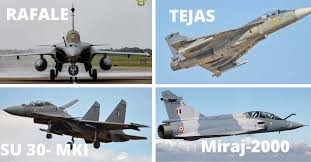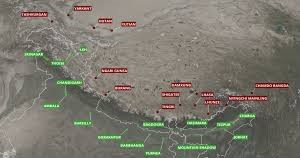My article was published in the May edition of the “Life of Soldier” journal.
Balancing affordability and capability in fighter acquisition programs is a complex and intellectually stimulating challenge in defence procurement. Modern fighter jets, with their advanced avionics, stealth technology, and weapons systems, are not just engineering marvels but also strategic assets that can dominate the air, land, and sea. However, these capabilities come at a steep cost, and governments must grapple with budgetary constraints while ensuring their air forces remain capable of addressing current and future threats. There is a need to explore the intricate trade-offs between affordability and capability, examine past successful and unsuccessful programs, and derive best practices for achieving an optimal balance.
Key Factors Influencing Fighter Acquisition Costs
Acquiring modern fighter aircraft is a complex and costly endeavour influenced by a myriad of factors, ranging from technological advancements to geopolitical considerations. Understanding these key factors is essential to comprehending the significant cost variations across different programs and nations.
Research and Development (R&D) Costs. One of the most significant cost drivers in fighter acquisition is R&D. Developing a new generation of aircraft requires extensive research, prototyping, and testing. Stealth technology, advanced avionics, and next-generation propulsion systems demand substantial investment.
Technology and Performance Requirements. The complexity of the technology integrated into a fighter jet directly influences its cost. High-end capabilities such as low observability (stealth), supercruise, advanced radar systems, and electronic warfare (EW) suites add to development and production expenses. The F-22 Raptor, known for its superior air dominance capabilities, became one of the most expensive fighters due to its cutting-edge technology.
Production Scale and Economies of Scale. The number of units produced significantly affects per-unit costs. Larger production runs allow for economies of scale, reducing the per-aircraft cost due to bulk purchasing of materials and more efficient manufacturing. For instance, the US fighter aircraft benefit from a large international procurement base, lowering their unit cost compared to limited-production fighters like the Eurofighter Typhoon or the Dassault Rafale.
Supply Chain and Material Costs. Raw materials, especially those used in composite structures and stealth coatings, impact the cost of fighter jets. Specialised alloys, titanium, and radar-absorbent materials are expensive and often difficult to source. Additionally, supply chain disruptions can inflate costs, as seen during the COVID-19 pandemic and the ongoing Russia-Ukraine and Israel-Hamas wars.
Workforce and Manufacturing Expertise. Highly skilled labour is required to assemble sophisticated aircraft. Countries with a well-established aerospace industry, such as the United States, France, and Russia, have the necessary expertise, but labour costs can vary. As seen in the F-35 production process, advanced automation and AI-driven manufacturing techniques can help reduce labour expenses over time.
Customisation and Export Modifications. Export variants of fighter aircraft often undergo modifications to meet the specific needs of the purchasing nation. These modifications can increase costs, such as different avionics, weapons compatibility, or structural changes. The Rafale, for example, had many India-specific features, leading to increased costs.
Lifecycle and Maintenance Costs. Beyond the initial acquisition, the total cost of ownership includes maintenance, spare parts, and upgrades over the aircraft’s lifespan. High-maintenance aircraft like the F-22, which require specialised maintenance for stealth coatings, can have significant long-term costs. On the other hand, modular designs and open-system architectures aim to keep maintenance costs lower.
Geopolitical and Strategic Considerations. Strategic alliances and political considerations often influence defence procurement. Countries that purchase fighters from allies may receive discounts or financing assistance as part of broader defence agreements. Conversely, embargoes or restrictions on technology transfers can drive up costs if alternative solutions are required. This underscores the need for foresight and strategic planning in defence procurement.
Trade-Offs in Fighter Acquisition Programs
Managing the intricacies of fighter aircraft procurement is vital to defence planning. Military leaders and policymakers must meticulously weigh performance, cost, operational requirements, and strategic objectives to maximise capabilities while staying within budgetary limits.
Balancing Cost and Performance. Acquiring fighter aircraft requires a delicate balance between cost and capability. While advanced fifth-generation fighters provide unmatched performance, they have high acquisition and operational expenses. More affordable alternatives may lack cutting-edge features but offer viable options for air forces with budget constraints. Governments must determine whether to invest in cutting-edge technology or build a more extensive fleet with slightly reduced capabilities.
Multirole Efficiency vs. Specialised Superiority. Modern fighters like the F-35 and Rafale are designed as multirole platforms capable of handling air-to-air combat, ground attacks, and electronic warfare. This reduces fleet diversity but may lead to trade-offs in specialised missions. Decision-makers must evaluate whether a single versatile platform meets their operational needs or if specialised aircraft are necessary for optimal effectiveness.
Domestic Production vs. Foreign Procurement. Nations must choose between developing indigenous fighter programs and purchasing aircraft from foreign suppliers. Domestic programs, such as India’s Tejas and South Korea’s KF-21, foster self-reliance but require extensive research and industrial infrastructure investment. In contrast, buying foreign aircraft ensures immediate capability but may create dependency on external suppliers for maintenance and upgrades.
Short-Term Gains vs. Long-Term Development. Some countries prioritise acquiring ready-made fighter jets to achieve immediate operational capability, while others invest in long-term development programs. Purchasing off-the-shelf platforms minimises short-term risks but may lead to obsolescence. On the other hand, long-term investments in projects like the Tempest and NGAD aim to ensure future technological superiority, albeit with higher financial and developmental risks.
Expanding Fleet vs. Cutting-Edge Technology. Budgetary constraints force militaries to choose between maintaining a more extensive fleet of less advanced aircraft or acquiring fewer high-tech fighters. A more comprehensive fleet provides excellent operational coverage, while fewer advanced jets offer superior combat capabilities. Many air forces supplement their expensive stealth fighters with more affordable fourth-generation aircraft to maintain a balance between numbers and technology.
Quantity vs. Capability Trade-offs. Nations must decide between acquiring a limited number of highly advanced fighters or a more extensive fleet of less sophisticated aircraft. For example, the U.S. supplemented its elite F-22 fleet with the more affordable F-35, while countries like China and Russia prioritise quantity to ensure strategic depth. This decision impacts force projection and overall combat effectiveness.
Case Studies
Various nations have adopted different strategies to achieve balance, ensuring operational effectiveness while managing costs.
F-16 Fighting Falcon (USA): Cost-Effective Multirole Performance. The F-16, developed in the 1970s, exemplifies how an affordable fighter can remain relevant through continuous upgrades. Originally designed as a lightweight, cost-effective platform, the F-16 has evolved with advanced avionics, radar, and weapon systems. By leveraging modular upgrades, nations operating the F-16 have extended their service life and capability without incurring the costs of entirely new aircraft programs. Its global success—operated by over 25 countries—demonstrates the financial benefits of export-oriented design.
JAS 39 Gripen (Sweden): Affordability through Smart Design. Sweden’s Saab JAS 39 Gripen was designed with cost efficiency in mind. Unlike competitors, the Gripen integrates an open-architecture system that allows easy upgrades, reducing long-term costs. Its reliance on off-the-shelf components, including an American engine and European avionics, lowers development expenses while maintaining high performance. The Gripen’s ability to operate from austere airfields and use cost-efficient maintenance procedures further enhances affordability. Its export success in countries like Brazil and South Africa has helped distribute costs across multiple buyers.
Eurofighter Typhoon (Europe): Multinational Cost Sharing. The Eurofighter Typhoon demonstrates how multinational collaboration can spread development costs while delivering a high-performance aircraft. Shared investment among Germany, the UK, Italy, and Spain allowed the Typhoon to integrate advanced capabilities while mitigating financial burdens on individual nations. Although initially expensive, its long-term sustainment plan ensures affordability through incremental modernisation.
Chengdu J-10 (China): Indigenous Development with Cost Control. China’s Chengdu J-10 was developed as an affordable, indigenous alternative to foreign fighters. China minimised costs by relying on domestic production and technology transfer from Russian sources while achieving a capable multirole aircraft. Continuous upgrades, including the J-10C variant with AESA radar and advanced avionics, have kept the platform competitive without excessive investment in entirely new designs.
Sukhoi Su-30 (Russia): Adaptability and Cost Efficiency. The Su-30 series is a prime example of how Russia balances affordability with performance. Initially derived from the Su-27, the Su-30 has been continuously upgraded to include advanced avionics, thrust-vectoring engines, and long-range strike capabilities. Its affordability and strong export potential have made it a staple in air forces worldwide, including India, Algeria, and Vietnam.
HAL Tejas (India): Indigenous Fighter Development for Cost-Effectiveness. India’s HAL Tejas was developed to reduce reliance on foreign fighters while maintaining affordability. Designed with modular upgrades in mind, the Tejas has gradually improved with better radar, weapons integration, and avionics. Despite delays in development, its affordability compared to Western counterparts has made it an attractive option for India’s long-term air power strategy.
KAI FA-50 (South Korea): Light Fighter for Affordability and Export Success. South Korea’s KAI FA-50, based on the T-50 trainer, is a cost-effective light fighter designed for domestic and export markets. With modern avionics and weapons compatibility, the FA-50 offers a budget-friendly solution for nations requiring a capable yet affordable jet. Its success in markets like the Philippines and Poland highlights its balance of affordability and capability.
Best Practices for Balancing Affordability and Capability
Balancing affordability and capability in fighter acquisition programs is a complex but essential task for modern air forces. Governments must ensure that their aircraft provide operational effectiveness without exceeding budgetary constraints. The following best practices help achieve this balance.
Lifecycle Cost Management. The total cost of a fighter aircraft extends beyond its initial purchase price. Governments must factor in long-term expenses such as maintenance, upgrades, and eventual disposal. A comprehensive lifecycle cost analysis prevents budget overruns and ensures the financial sustainability of an air force over decades of service.
Continuous Modernisation Strategies. Modern fighter aircraft benefit from modular systems and open architectures that enable incremental upgrades. The F-16 Fighting Falcon, for instance, has remained operational since the 1970s due to continuous improvements in avionics, radar, and weapons. This strategy extends an aircraft’s service life while spreading costs over time, reducing the need for costly replacements.
Leveraging Partnerships. Multinational collaborations in fighter development and production help distribute costs among participating nations. Programs like the F-35 Joint Strike Fighter and the Eurofighter Typhoon demonstrate shared investment’s financial and technological benefits. By pooling resources, nations reduce individual financial burdens while gaining access to cutting-edge technology.
Maximising Multi-Role Capabilities. Multi-role fighters enhance operational flexibility by performing diverse missions within a single platform. The Dassault Rafale exemplifies this approach, excelling in air combat, ground attack, and reconnaissance. Such versatility allows air forces to reduce reliance on multiple aircraft types, simplify logistics, and lower maintenance costs.
Enhancing Export Potential. Designing fighters with exportability in mind helps amortise development costs and lower per-unit expenses. Countries that successfully market their fighter jets internationally can reinvest revenues into further technological advancements, strengthening their domestic defence industry.
Robust Program Management. Effective oversight and clear program objectives are crucial to avoiding cost overruns and scope creep. Strong governance, transparent communication, and disciplined financial management ensure that fighter programs stay within budget while meeting operational requirements. The U.S. Air Force’s Next Generation Air Dominance (NGAD) program has emphasised digital engineering to streamline development and prevent cost escalation.
Embracing Emerging Technologies. Advancements in technology are reshaping how air forces balance affordability and capability. The following innovations are improving cost efficiency while enhancing combat effectiveness.
The Role of Unmanned Systems. Unmanned aerial vehicles (UAVs) and “loyal wingman” drones complement traditional fighter jets by undertaking high-risk missions at a lower cost. These systems enhance reconnaissance, electronic warfare, and combat operations, reducing pilot exposure to danger. Programs like the Boeing MQ-28 Ghost Bat highlight the increasing integration of UAVs into modern air combat strategies.
Digital Engineering. Digital twins and model-based systems engineering accelerate fighter development and reduce costs. Digital prototypes allow designers to test and refine aircraft designs in virtual environments before physical production begins.
Additive Manufacturing. 3D printing, or additive manufacturing, streamlines the production of complex aircraft components, reducing material waste and manufacturing time. This technology enables rapid part replacement, minimising downtime and sustainment costs. Fighter manufacturers increasingly use 3D printing to enhance affordability without sacrificing performance.
AI-Driven Warfare. Artificial intelligence (AI) transforms modern fighter capabilities by improving decision-making, enhancing situational awareness, and reducing pilot workload. AI-powered mission planning and adaptive combat algorithms enable greater efficiency and operational effectiveness, potentially lowering training costs and increasing mission success rates.
Conclusion
Balancing affordability and capability in fighter acquisition programs is a complex but essential endeavour. As nations face evolving threats and fiscal constraints, the ability to make strategic trade-offs will determine the effectiveness of their air power. By embracing innovative technologies, fostering international collaboration, and adopting robust program management practices, governments can achieve an optimal balance that ensures operational readiness and financial sustainability. The lessons from past programs and emerging trends guide navigating this challenging landscape.
Please Add Value to the write-up with your views on the subject.
For regular updates, please register your email here:-
References and credits
To all the online sites and channels.
Pics Courtesy: Internet
Disclaimer:
Information and data included in the blog are for educational & non-commercial purposes only and have been carefully adapted, excerpted, or edited from reliable and accurate sources. All copyrighted material belongs to respective owners and is provided only for wider dissemination.
References:-
- Arena, M. V., Blickstein, I., Younossi, O., & Grammich, C. (2008). Why Has the Cost of Fixed-Wing Aircraft Risen? RAND Corporation.
- Lorell, M. A. (2003). Going Global? U.S. Government Policy and the Defence Aerospace Industry. RAND Corporation.
- Tirpak, J. A. (2020). “How Much Should a Fighter Cost?” Air Force Magazine.
- Trimble, S. (2018). “F-15EX vs. F-35A: The Debate Over Air Superiority Affordability.” FlightGlobal.
- Shalal, A. (2021). “Cost vs. Capability: U.S. Air Force Considers Future Fighter Mix.” Reuters.
- Majumdar, D. (2017). “Why Stealth Fighters Are So Expensive (And What Can Be Done About It).” The National Interest.
- Laird, R. F., & Timperlake, E. (2013). Rebuilding American Military Power in the Pacific: A 21st-Century Strategy. ABC-CLIO.
- Heginbotham, E., Nixon, M., Morgan, F. E., Heim, J. L., Hagen, J., & Engstrom, J. (2015). The U.S.-China Military Scorecard: Forces, Geography, and the Evolving Balance of Power, 1996–2017. RAND Corporation.
- Sweetman, B. (2014). The F-35 Lightning II: From Concept to Cockpit. Zenith Press.
- Johnson, J. M. (2019). The Cost of Air Superiority: The Economics of the F-22 Raptor. Air & Space Power Journal.
- European Defence Agency (EDA). (2022). European Combat Aircraft: Multinational Cooperation and Industrial Sustainability.
- Congressional Budget Office (CBO). (2020). The Cost of Replacing Today’s Air Force Fleet.
- Kausal, V. (2003). Arming the Indian Arsenal: Challenges and Policy Options for India’s Defence Industrialisation. Routledge.



